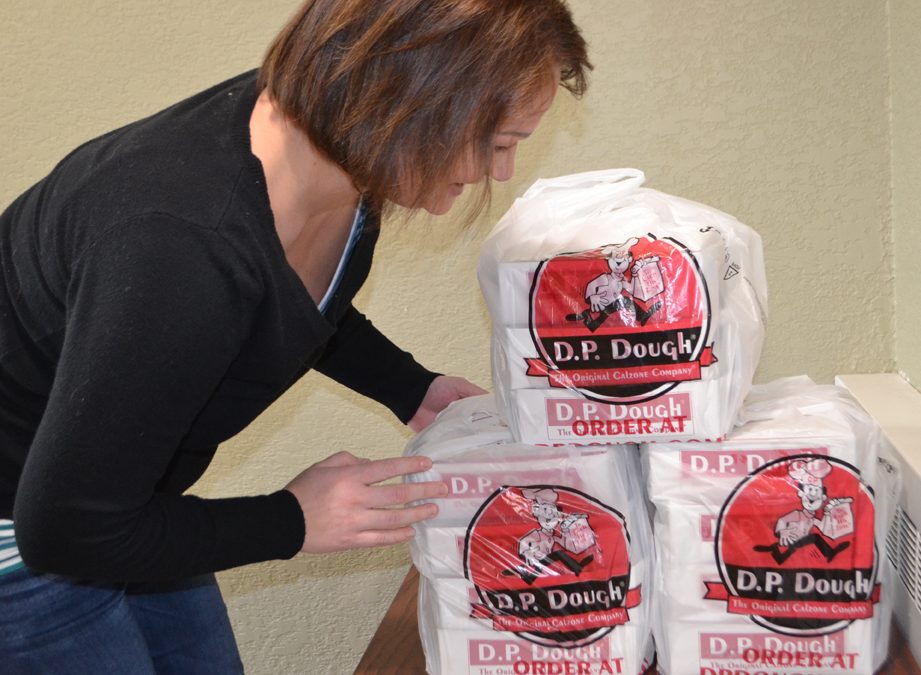If you’re a college student, calzones are the perfect delivery food.
A pizza delivered to your dorm room requires having to “pay the roommate tax,” says Matt Crumpton, CEO of D.P Dough. In other words: “You’re a jerk if you don’t give up one or two slices of pizza, but you never get asked to share a calzone.”
A calzone, which in essence is a pizza that’s been folded in half so all the toppings are inside the crust, fits easily in an 8-inch-by-8-inch box (about half the size of a large pizza box).
Crumpton joined his father in the calzone business as a franchisee of D.P. Dough. When they had a problem with the absentee franchisor, they bought the chain, now based in Columbus, Ohio. “We’re positioned to be the alternative to the pizza industry,” he says.
Their model is to locate across the street from colleges, he says, a hotbed of late-night delivery requests.
Drivers are employees, not independent contractors. Why? “The pool of delivery drivers without cars is greater than those with cars,” he says, matter-of-factly. “Drivers make double to triple what kitchen workers make, but nobody has a car.”
That means having to supply cars, but if your business model is delivery, it’s the cost of doing business. A boon for D.P. Dough, however, is that since college campuses aren’t always car friendly, the chain has a fleet of electric bikes. Bikes can go up to 30 mph and don’t get towed the way cars with their flashers left on in no parking zones are.
The storeowners run a motor vehicle registration report on the drivers and submit them to their insurance company. They also give a drivers 101 training that includes road safety, but also what to do when the delivery address has a locked door or a customer asks for a ride.
You wouldn’t believe the number of times his drivers deliver to a late-night party and someone asks for a ride home. “Their excuse is always, ‘you don’t understand how hot she was,’” Crumpton says. While he may be sympathetic, the insurance company is not, so ridesharing and accepting weed or alcoholic drinks (also common) is non-negotiable. And, there’s no tolerance for substance abuse, a 0.0 percent blood alcohol level is the only acceptable one for drivers. Ditto on marijuana.
As corporate guys, Crumpton and his father had a lot to learn about the food and delivery business. But unlike some newcomers, “We know what we don’t know,” so they brought in consultants to help in all parts of the business.
For instance, the original owner used a regular white box. “We added vents,” Crumpton says, and the results were fewer complaints about soggy food. And it didn’t cost them a thing, the manufacturer added the vents for the same price as the original box.
Another challenge is predicting demand. To be properly staffed for rushes, means needing people willing to work for one-and-a-half hours some days. Third-party delivery is the answer in some markets, he says, adding that the downside is that they then own the customer. The payout to the third-party deliver also can’t be written off to customer acquisition. The only way to get around it, he says, is to try and work with vendors who aren’t a threat to your business, such as fees in the 10% to 15% range, “The 30% to 35% range is hard”—especially when you have a fleet of electric bikes to pay for.



